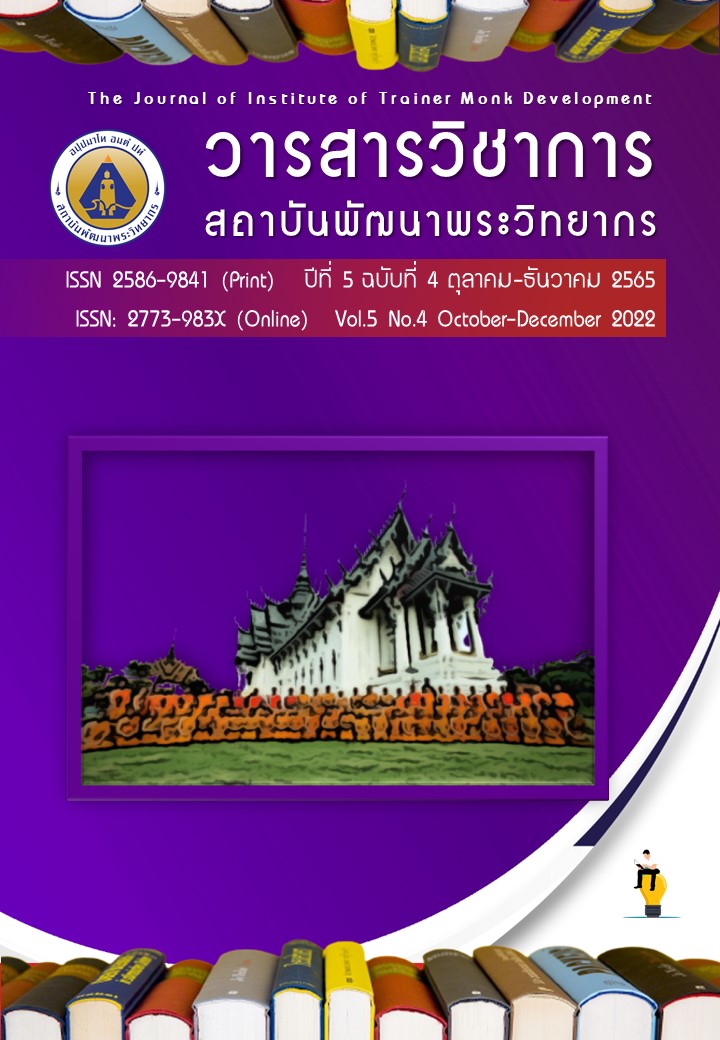Test of Gender Invariance of the Test Anxiety Scale among Secondary School Student
Main Article Content
Abstract
This research aimed to 1) assess the reliability, construct validity and 2) test gender invariance of the test anxiety scale among secondary students. The sample consisted of 480 secondary school students in Thailand. Two-stage random sampling stratified by school size and student gender was applied using dataset from program for international student assessment 2015 (PISA 2015). The research instruments consist of personal data questionnaire and the test anxiety scale were used. Frequency, percentage, mean and standard deviation, Pearson’s correlation coefficient and multi-group confirmatory factor analysis were used to analyze data.
The research results were found as follows; 1) the test anxiety scale was yielding high reliability (a=0.82) and confirmatory factor analysis demonstrated that the measurement model labeled a high quality of construct validity (c2=1.98, df=3, p-value=0.58, CFI=1.00, RMSEA<0.01, SRMR =0.01) 2) the test anxiety scale featured strict gender invariance.
Article Details

This work is licensed under a Creative Commons Attribution-NonCommercial-NoDerivatives 4.0 International License.
บทความที่ได้รับการตีพิมพ์เป็นลิขสิทธิ์ของวารสารวิชาการสถาบันพัฒนาพระวิทยากร
ข้อความที่ปรากฎอยู่ในบทความที่ได้รับการตีพิมพ์ในวารสาร ถือเป็นความรับผิดชอบของผู้เขียนบทความ และข้อคิดเห็นนั้นไม่ถือว่าเป็นทัศนะและความรับผิดชอบของกองบรรณาธิการวารสารวิชาการสถาบันพัฒนาพระวิทยากร
References
กนกวรรณ ปรีดิ์เปรม, สมโภชน์ เอี่ยมสุภาษิต, และเมธาวี อุดมธรรมานุภาพ. (2563) ผลของการสวดมนต์และการฟังบทสวดมนต์ที่มีต่อความวิตกกังวลในการสอบของนักเรียนมัธยมศึกษาปีที่ 4 ที่มีความศรัทธาในพุทธศาสนา.วารสารสันติศึกษาปริทรรศน์ มจร. 8(2), มีนาคม – เมษายน.
นงลักษณ์ วิรัชชัย. (2554). การทดสอบความไม่แปรเปลี่ยนของการวัดระหว่างกลุ่มผู้ถูกวัดด้วยการวิเคราะห์โมเดลสมการโครงสร้าง. วารสารวิจัยและพัฒนาหลักสูตร. 1(1), 69-80.
ลักขณา สริวัฒน์. (2561). ทำไมจึงต้องมีการปรับตัว? วารสารการบริหารและนิเทศการศึกษา มหาวิทยาลัยมหาสารคาม. 9(3), 7-17.
วิชญ ผาติหัตการ. (2564). ผลของดนตรีคลาสสิคต่อผลสัมฤทธิ์ในการสอบและความวิตกกังวลในการสอบของ ผู้ที่มีบุคลิกภาพแบบเก็บตัว-แสดงตัว. (Doctoral dissertation).
อัครเดช เกตุฉ่ำ และธัชพงศ์ เศรษฐบุตร. (2565). การทดสอบความไม่แปรเปลี่ยนในการวัดระหว่างเพศของแบบวัดการยอมรับการเรียนรู้ผ่านสื่ออิเล็กทรอนิกส์ของนักศึกษาในช่วงการระบาดของโรคโควิด 19. วารสารการวัดผลการศึกษา มหาวิทยาลัยมหาสารคาม. 28(1), 363-379.
Clark, D. B., Smith, M. G., Neighbors, B. D., Skerlec, L. M., & Randall, J. (1994). Anxiety disorders in adolescence: Characteristics, prevalence, and comorbidities. Clinical Psychology Review. 14(2), 113-137.
Ergene, T. (2003). Effective interventions on test anxiety reduction: A meta-analysis. School psychology international. 24(3), 313-328.
Jalilian, F., Mirzaei-Alavijeh, M., Karami-Matin, B., Hosseini, S. N., Jouybari, T. A., Mahboubi, M., & Firoozabadi, A. (2016). Test anxiety among Iranian college students; investigation the role of Socio-Demo graphic factors. Research Journal of Applied Sciences. 11(8), 640-644.
Milfont, T. L., & Fischer, R. (2010). Testing measurement invariance across groups: Applications in cross-cultural research. International Journal of psychological research. 3(1), 111-130.
OECD. (2017a). PISA 2015 Assessment and Analytical Framework: Science, Reading, Mathematic, Financial Literacy and Collaborative Problem Solving. Paris: OECD Publishing.
OECD. (2017b). PISA 2015 Database [Data file and code book]. Retrieved November 1, 2021 from https://www.oecd.org/pisa/data/2015database/
Preacher, K. J., & Coffman, D. L. (2006). Computing power and minimum sample size for RMSEA [Computer software]. http://quantpsy.org
Sarason, S. B., Davidson, K. S., Lighthall, F. F., Waite, R. R., & Ruebush, B. K. (1960). Anxiety in elementary school children: A report of research.
Torrano, R., Ortigosa, J. M., Riquelme, A., Méndez, F. J., & López-Pina, J. A. (2020). Test anxiety in adolescent students: different responses according to the components of anxiety as a function of sociodemographic and academic variables. Frontiers in Psychology. 11, 612270.
Von Der Embse, N., Barterian, J., & Segool, N. (2013). Test anxiety interventions for children and adolescents: A systematic review of treatment studies from 2000–2010. Psychology in the Schools. 50(1), 57-71.


